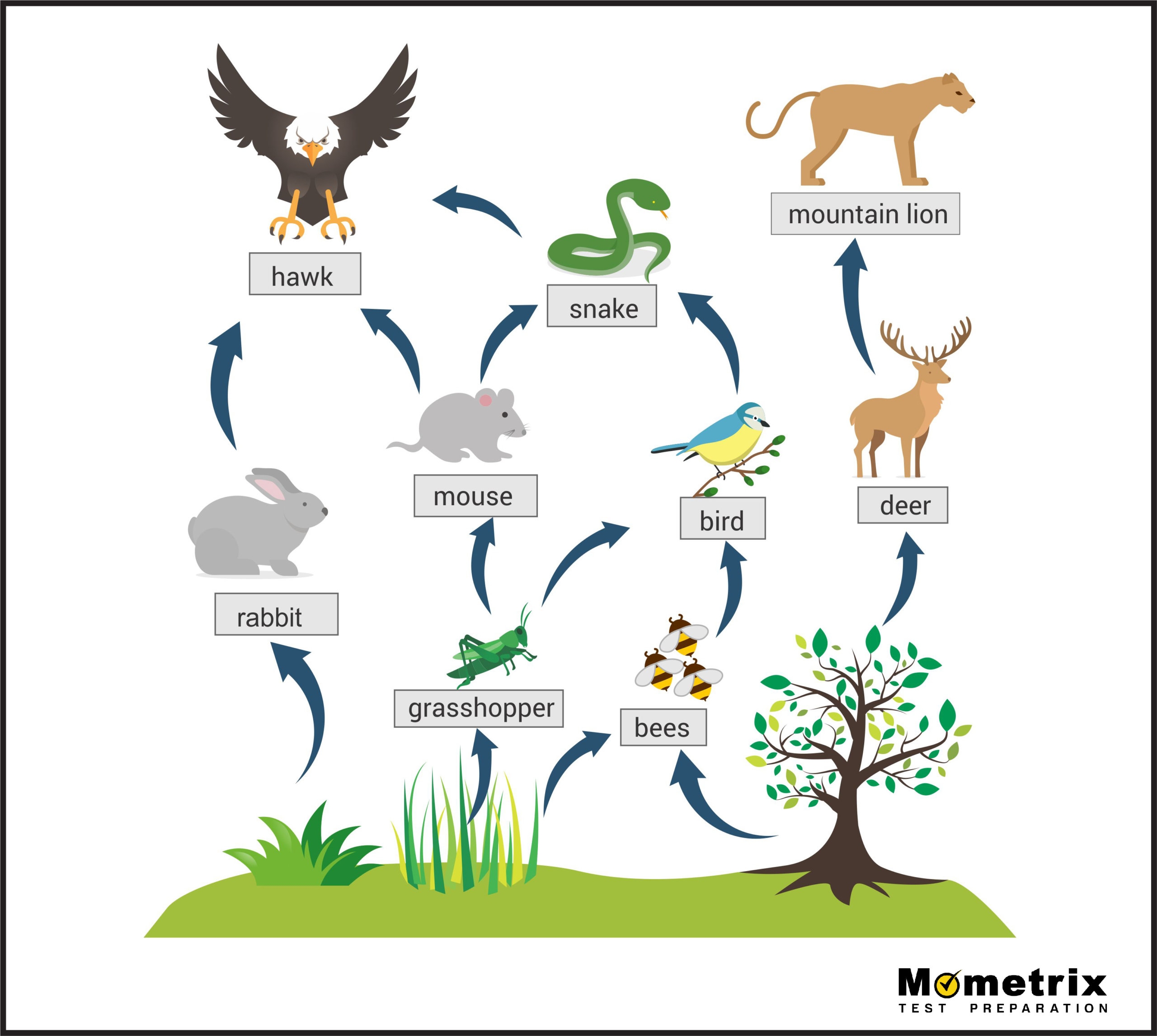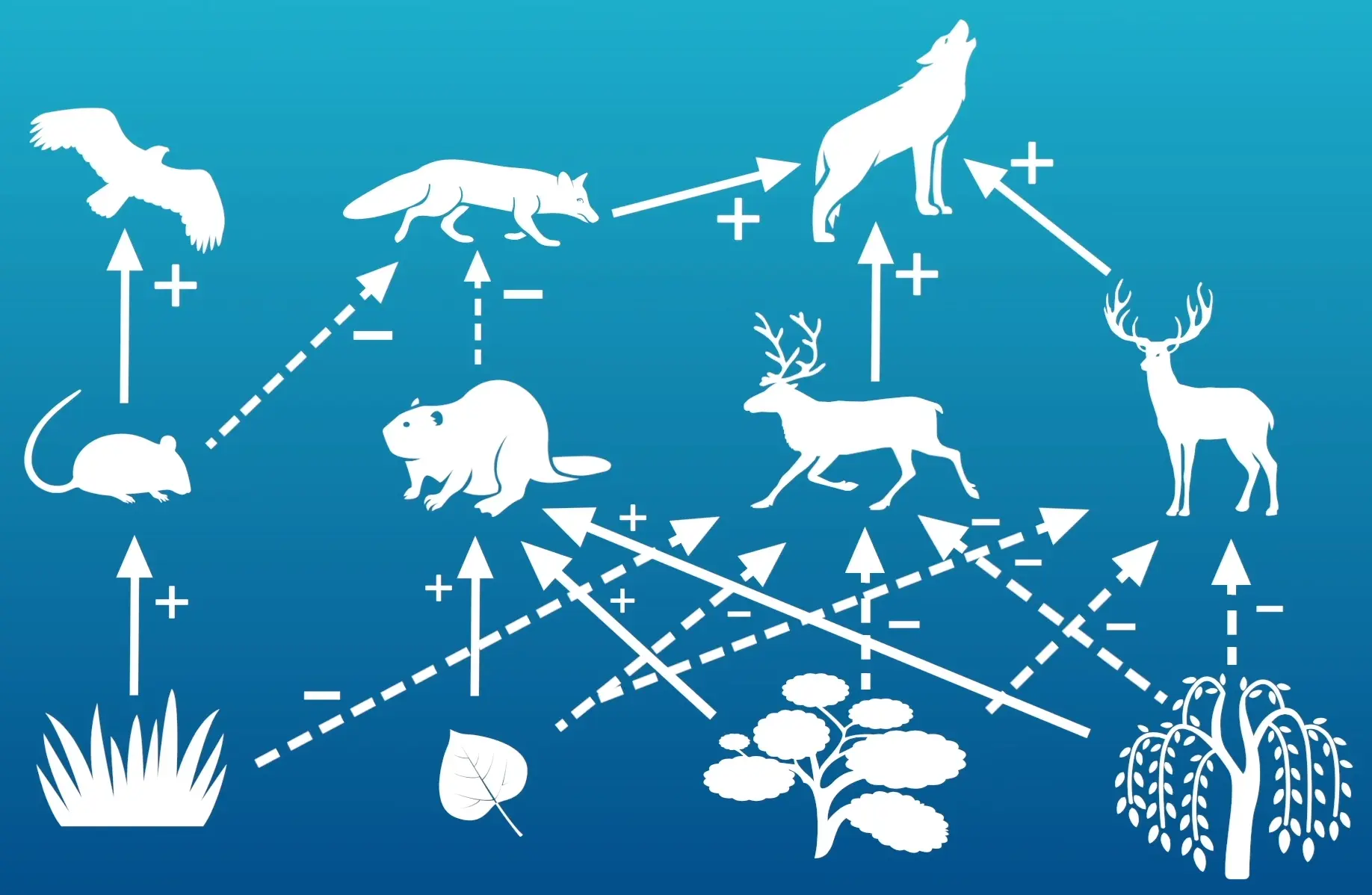
We live in a complex world made up of communities, small and large, full of trends and other measurable behavior. But in terms of biology, how much difference does one species really make to an ecosystem? A lot, as it turns out. Today, we’ll be talking about ecosystems and how they can be affected by food webs. Let’s go eat!
What is an Ecosystem?
So, what exactly is an ecosystem? Ecosystems are systems made up of many different types of species of plants, animals, and decomposers, and they also include resources like air, water, and sunlight for organisms to use.
Ecosystems are very sensitive to change, so if one species goes extinct or if the climate changes, these systems can be thrown out of balance. Most animals are native to one place and largely remain in that system for generations unless weather or predation drives them to another location.
Food Chains
Now, before we get into food webs, let’s talk about food chains, the building block of food webs.
In any ecosystem, each member relies on all the others either directly or indirectly. A rabbit directly relies on grass so that it can eat. But the rabbit also indirectly relies on the sun because the rabbit eats the grass that converts sunlight into chemical energy via photosynthesis. When energy passes from one source to another, we call that an energy exchange.
The simplest form of an energy exchange among organisms can be represented through a diagram like this one, which we call a food chain:

Ecosystem Dynamics
Food chains can be made up of all kinds of different species within a system, but they all start with the sun as the initial energy source. The next level is usually a producer like a plant that can easily convert that energy into something nutritious and energy-rich that the next level can eat. So the following level with our rabbit, in this case, is known as the primary consumer level because the rabbit consumes the level before him. Primary consumers are usually herbivores or omnivores since they eat plants. If a snake eats the rabbit, the snake is known as a secondary consumer.
We can also have tertiary and quaternary consumers based on the ecosystem, but in the end, there’s always a predator to eat the last consumer and a decomposer to recycle the scraps.
So in our food chain example we could have an owl as our predator and fungi as our decomposers. We know the owl is a predator because it preys on other consumers. Because the owl is a predator but isn’t consumed herself, she’s called an apex predator. When the owl is done having her snack, decomposers like fungi will convert any waste like scraps from the meal or anything the owl passes into nutrients to be put back into the soil, acting like food for plants. So in this way, food chains are really a misnomer because they are more like “food cycles.”
Food Webs
These are great for honing in the habits of a few related organisms, but they’re not great when the rabbit decides she wants something else for lunch outside of that specific chain. When we want to consider how other species interact, we can use a food web. A food web is basically like a bunch of food chains together in one diagram that considers more feeding options.
Wildlife biologists can use this to see what kind of trickle-down effect the addition or removal of a species can have on the ecosystem. However, a lot of times this isn’t so easily predictable. A good example is the recent reintroduction of wolves into Yellowstone National Park.
Yellowstone National Park Experiment
In 1995, Yellowstone decided to bring wolves back to one of their native habitats. The wolves had previously been hunted off the land and biologists didn’t know how impactful reintroducing them would be. Within just 10 years, they saw a lot of surprising changes in the food web with wolves being the new apex predator. Let’s take a look.
This is a partial food web that shows the main species involved in, or affected by, the wolf’s feeding habits:

As with any food web, the primary source of energy comes from the sun. This energy is transferred to our bottom row of producers: grasses, aspen trees, cottonwood trees, and willow trees. All of these plants are then food sources for the next row of primary consumers: mice, beavers, elk, and mule deer.
Notice how mice are shown to only eat grass in this partial web, while the elk eats all of the available plants. The next row up shows rough-legged hawk and coyote as predators to the mice and beavers. But the wolf occupies the top-most spot because it is the apex predator, meaning nothing is above it in the food web and nothing will eat it.
To see how wolves have changed how all of these organisms interact, let’s first look at the relationship between wolves and elk. The web shows that wolves are the main predator for elk. So when the wolves were reintroduced, biologists found that the wolves put pressure on the elk, so the elk moved around more to avoid being prey for the wolves. This kept the elk from overgrazing in any certain area and allowed more native grasses and trees to grow back–trees like the aspen, cottonwood, and willow trees. Before the wolves were brought back, elk would eat stems of willow trees so much so that a lot of them couldn’t grow back in the spring. Post-wolf, the willow trees were able to grow back.
Scientists noticed how important willow trees were to the ecosystem by studying beaver populations within the park. Beaver were scarce in the park when the elk were still munching on the willow trees, because, as it turns out, willow trees are also a food and shelter source for beavers. Beaver populations were able to bounce back pretty quickly with fewer elk and more willow trees.
Other changes that were recorded but not listed in the food web here include a boost for scavengers like ravens and grizzly bears who were able to eat more scraps from what wolves left behind.
Trophic Cascade
Essentially one small change, like bringing one species back to its native habitat, caused a rippling effect for the entire ecosystem. This effect is known as a trophic cascade. In reality, hundreds of species were affected by this change and, so far, the wolf has helped balance out Yellowstone’s ecosystem. Their introduction is relatively new, however, so any other conclusions have yet to be drawn.
Ok, now that we’ve discussed food webs and their impact on ecosystems, let’s look at a review question to test your memory.
Review Questions
An omnivore, like an American black bear, most likely occupies which level of the food web?
- Primary producer
- Primary consumer
- Secondary producer
- Secondary consumer
- Predator
- More than one
American black bears are a great example of why we need food webs. Black bears are omnivores, so they eat berries and other plants making them primary consumers, but they also eat meat so they could also occupy the secondary consumer or predator tier in some ecosystems.
I hope this review was helpful! Thanks for watching, and happy studying!
